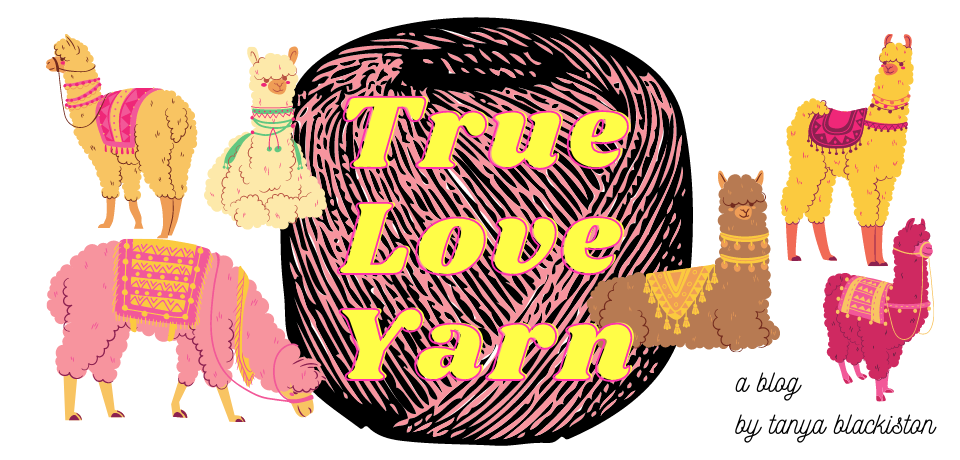For this project you will need some undyed yarn (any weight you like). I bought 100g of Zitron Trekking Undyed 4-ply Sock Yarn, which is 75% wool and 25% nylon ... perfect for socks as it has the nylon for extra strength and is machine washable at 40 degrees.
I put two kitchen chairs as far apart as I could, across the length of my kitchen and hallway. Any long length will work. You then proceed to wind your undyed skein around the backs of the chairs so creating a long loop of yarn.
Once all of the skein has been wrapped around the chair backs, you will need to secure it by tying as shown below in at least four places, spaced out evenly around the entire length of yarn. This is an important step as it will help to prevent your yarn from tangling up into a huge knot.
Place your dry yarn in a luke-warm water bath for at least half an hour whilst you prepare your dyes ...
Take four or more empty and clean jam jars. Put 300ml of hot water in each and add one to two packets of Kool Aid dye to each. Choose a different colour for each of the jam jars.
Stand the jam jars in a large saucepan and carefully add enough water to the saucepan (in bain marie style) so that the water comes to about a third of the way up the jars.
As you can see in the photo below, I've used a range of different reds for my self-striping yarn.
Then, after gently squeezing all of the excess water out of your yarn, you can start to add it to the jars. I added a length to the first of the jars until no more would fit, and then I began to fill the next jar with yarn and so on until all the yarn had been covered in dye.
To achieve this, I ended up needing four jars full ...
Where the yarn stretches between the jars, make sure you dunk the undyed yarn under the dye solutions to ensure that you don't leave gaps of white between the different containers.
I used my fingers for this and later realised that it would have been much better to wear some rubber gloves!
Monitor the heat setting on your hob so that you bring the water in the saucepan up to a fast simmer.
And as if by magic you will see the water in the jam jars turn clear (and sometimes a little milky).
Try not to prod and poke the yarn too much.
I left my yarn on the heat for between 20 mins to half an hour, double checked that all the dye had been taken up by the yarn and then turned the hob off.
The temptation here is to want to see it straight away, but the key is to leave it cool without touching it.
The rule is to leave natural wool until it's completely cool before rinsing, and superwash wool until the water is cool enough to touch.
Try to use water that is a similar temperature to the water you've just taken the yarn from to do your rinse, so that you don't shock the fibers and felt them. Add a little drop of detergent and let soak for a little while. Try not to agitate the yarn, but use a gentle action.
Squeeze (don't wring) the water away from the yarn. Roll it up in a dry towel, stand on it, using your body weight to press out any extra water.
Then hand your new yarn somewhere warm, but away from direct sunshine, to dry fully.
Once dry, you need to place your yarn back over the chair backs at as far away it takes to achieve taughtness in the yarn lengths. By eye, untwist the loop of yarn so that the strands are as parallel as you can get. Then carefully cut away the ties you made with acrylic yarn, which should still be a white colour and easy to see.
Then by hand, wind the yarn into a ball, untangling where necessary as you go.
Once you have a hand-wound ball, you can use a yarn winder to make a centre-pull ball, or a yarn swift (or niddy noddy) to make a skein.
And here's my finished self-striping yarn, re-skeined and pictured next to the inspiration for the colourway ...
I've called this my Ephipany yarn. It is named after the Epiphany Chapel in the Winchester Cathedral where this stained glass window is located. It was designed by William Morris and Edward Burne-Jones of the Pre-Raphaelite Movement in 1910 ... my favourite era in British art.













